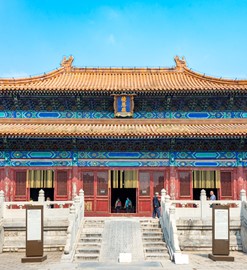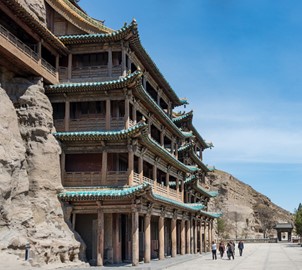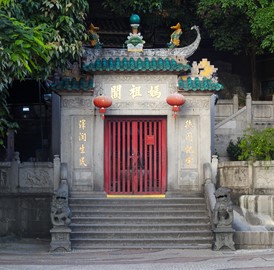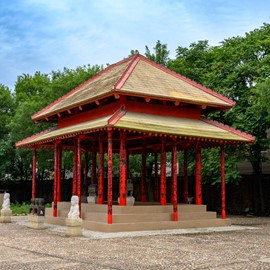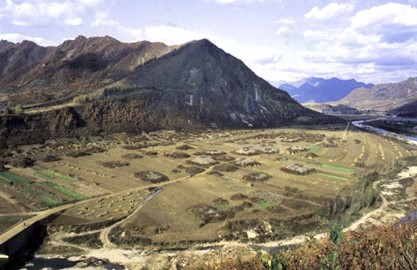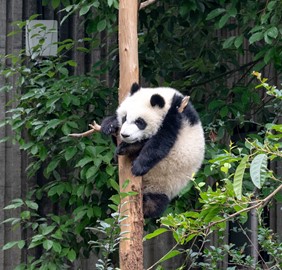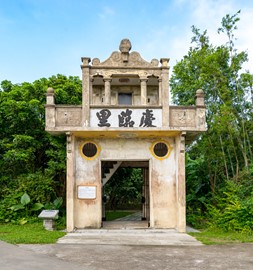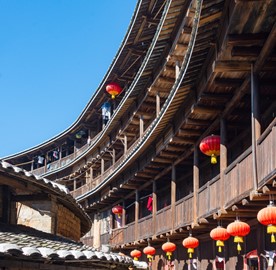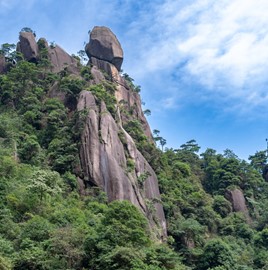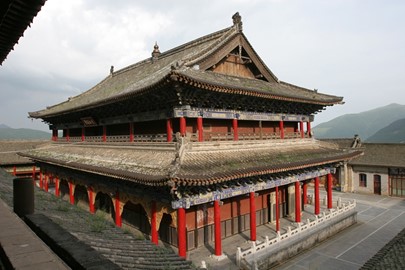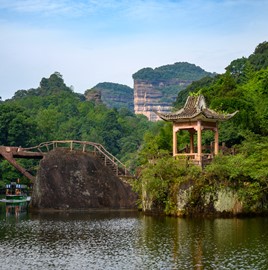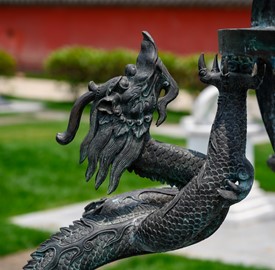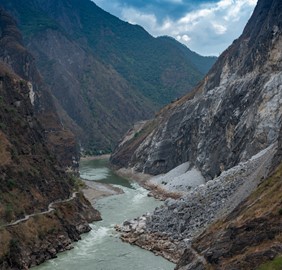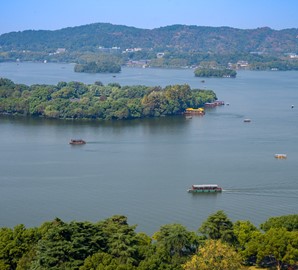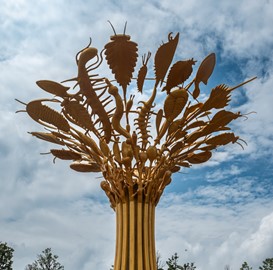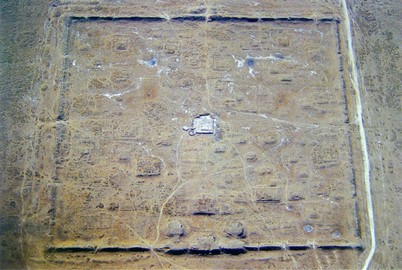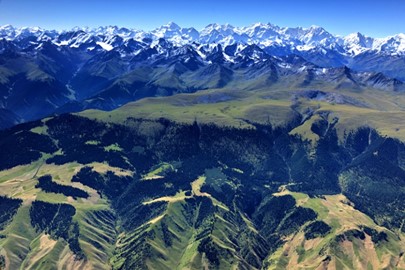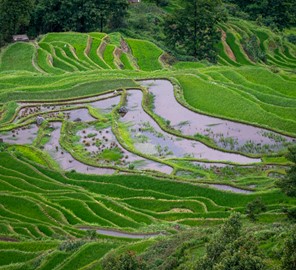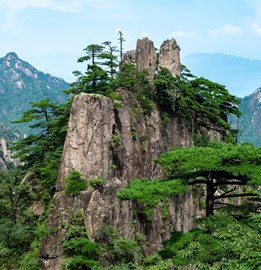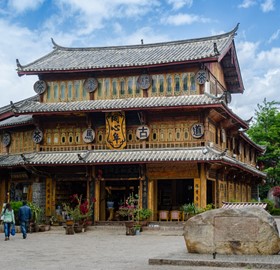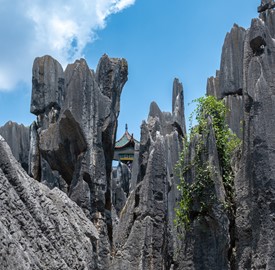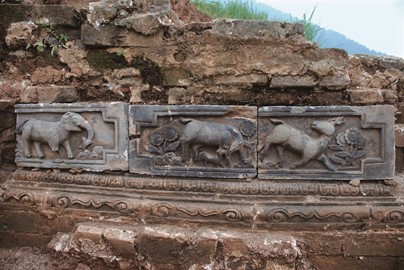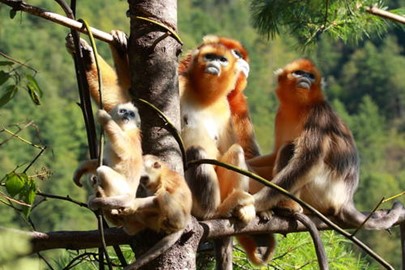region :: asia and the pacific
Imperial Tombs
The Imperial Tombs of the Ming and Qing Dynasties, a UNESCO World Heritage site in China, are a collection of grand mausoleums honoring emperors of two dynasties. Featuring elaborate stone pathways, ornate statues, and majestic halls, these sites blend feng shui principles with stunning architecture. Set amidst serene landscapes, they reflect imperial reverence for ancestry and the afterlife, preserving centuries of royal legacy.
Yungang Grottoes
The Yungang Grottoes, a UNESCO World Heritage site in China, are a magnificent series of 5th-century Buddhist cave temples carved into sandstone cliffs. Housing over 50,000 statues, from towering Buddhas to intricate reliefs, they showcase early Chinese rock art and the spread of Buddhism. This ancient site blends artistic mastery with spiritual significance, offering a striking testament to cultural heritage.
Macau
The Historic Centre of Macau, a UNESCO World Heritage site in China, is a vibrant fusion of Chinese and Portuguese colonial heritage. Featuring cobblestone streets, baroque churches, and traditional temples, it reflects centuries of cultural exchange as a trading hub. Iconic landmarks like fortress ruins and pastel-colored buildings highlight its unique East-meets-West identity, preserving a rich historical tapestry.
Yin Xu
Yin Xu, a UNESCO World Heritage site in China, is an ancient archaeological site revealing the ruins of a late Shang dynasty capital from over 3,000 years ago. Excavations uncovered royal tombs, palace foundations, and oracle bone inscriptions, the earliest known Chinese writing. This remarkable site offers critical insights into early Chinese civilization, urban planning, and bronze-age culture.
Koguryo Kingdom
The Koguryo Kingdom, a UNESCO World Heritage site in China, preserves remnants of an ancient Northeast Asian civilization from the 1st century BCE to 7th century CE. Its fortified cities, elaborate tombs, and vibrant murals showcase advanced architecture and artistry, reflecting the kingdom’s power and cultural sophistication. This site offers a rare glimpse into a pivotal era of regional history and heritage.
Sichuan Giant Panda
The Sichuan Giant Panda site, a UNESCO World Heritage site in China, is a vital conservation area protecting the iconic giant panda and its bamboo-rich habitat. Spanning lush forests and rugged mountains, it supports a diverse ecosystem with rare species like the red panda and snow leopard. This natural sanctuary highlights global efforts to preserve biodiversity and the beloved panda’s cultural significance.
Kaiping Diaolou
The Kaiping Diaolou, a UNESCO World Heritage site in China, are unique multi-story watchtowers blending Chinese and Western architectural styles from the late 19th and early 20th centuries. Built by overseas Chinese as homes and defenses against bandits, these fortified structures feature ornate designs and robust construction. Set amidst rural landscapes, they reflect a fascinating fusion of cultures and historical resilience.
Fujian Tulou
The Fujian Tulou, a UNESCO World Heritage site in China, are distinctive earthen fortresses built by the Hakka people between the 12th and 20th centuries. These circular or rectangular structures, designed for communal living and defense, feature thick mud walls and intricate wooden interiors. Nestled in scenic valleys, they showcase ingenious engineering and a unique cultural tradition of harmony and resilience.
Mount Sanqingshan
Mount Sanqingshan, a UNESCO World Heritage site in China, is a sacred Taoist mountain renowned for its dramatic granite peaks, twisted pines, and misty landscapes. Home to ancient temples and diverse flora and fauna, it blends natural splendor with spiritual significance. Its striking geological formations and serene beauty make it a revered destination for pilgrims and nature enthusiasts alike.
Mount Wutai
With its five flat peaks, Mount Wutai, a UNESCO World Heritage site in China, is a revered Buddhist mountain known for its five flat peaks and ancient monasteries. A spiritual center since the 1st century, it houses ornate temples with intricate statues and relics, set against a backdrop of rugged landscapes. This sacred site draws pilgrims and visitors seeking its profound cultural and natural harmony.
China Danxia
China Danxia, a UNESCO World Heritage site in China, is a striking geological landscape of vibrant red sandstone formations, sculpted into dramatic cliffs, peaks, and valleys. Formed over millions of years, its colorful layers and unique shapes create a surreal natural spectacle. Rich in biodiversity, this site blends scientific wonder with breathtaking beauty, captivating geologists and travelers alike.
Dengfeng
Dengfeng, a UNESCO World Heritage site in China, encompass ancient architectural treasures linked to the birthplace of Shaolin martial arts and Chinese cosmology. Featuring temples, observatories, and academies from the 3rd century BCE to the 14th century CE, they reflect a fusion of Buddhist, Taoist, and Confucian traditions. Set against a mountainous backdrop, this site showcases centuries of cultural and intellectual legacy.
Three Parallel Rivers of Yunnan
The Three Parallel Rivers of Yunnan, a UNESCO World Heritage site in China, is a dramatic landscape where three major rivers carve deep gorges through towering mountains. This unique geological formation supports an extraordinary range of ecosystems, from alpine peaks to subtropical forests, hosting rare species like the snow leopard. Its stunning natural beauty and biodiversity make it a global treasure of ecological significance.
West Lake
West Lake, a UNESCO World Heritage site in China, is a serene landscape of tranquil waters, graceful bridges, and ancient pagodas that have inspired poets and artists for centuries. Surrounded by lush hills and dotted with temples and gardens, it reflects traditional Chinese ideals of harmony between humans and nature. This iconic site blends natural beauty with profound cultural heritage.
Chengjiang Fossil Site
The Chengjiang Fossil Site, a UNESCO World Heritage site in China, is a remarkable paleontological treasure preserving fossils from 520 million years ago. Known for its exquisitely detailed soft-bodied organisms, it offers critical insights into the Cambrian Explosion, a pivotal evolutionary event. This ancient snapshot of early marine life captivates scientists and highlights Earth’s biological history.
Site of Xanadu
The Site of Xanadu, a UNESCO World Heritage Site in Inner Mongolia, China, encompasses the ruins of Kublai Khan’s legendary summer capital of the Yuan Dynasty, designed in 1256 by Chinese advisor Liu Bingzhong. Blending Mongolian nomadic and Han Chinese cultures, it features remnants of palaces, temples, tombs, and waterworks, reflecting its historical role in cultural fusion and the spread of Tibetan Buddhism. Immortalized by Marco Polo’s accounts and Samuel Taylor Coleridge’s poem 'Kubla Khan,' Xanadu rem... Read More
Xinjiang Tianshan
Xinjiang Tianshan, a UNESCO World Heritage Site in China, is a majestic mountain range renowned for its dramatic landscapes, including snow-capped peaks, deep valleys, and diverse ecosystems. Spanning deserts, meadows, and forests, it hosts unique biodiversity with rare species like the Tianshan snow lotus. The region’s striking red sandstone formations and glacier-fed rivers create a stunning natural spectacle, while its cultural significance as a historical Silk Road corridor adds depth. Ideal for trekkin... Read More
Hani Rice Terraces
The Hani Rice Terraces, a UNESCO World Heritage site in China, are a breathtaking network of cascading fields carved into mountainsides by the Hani people over 1,000 years. These intricate terraces, sustained by an ancient irrigation system, blend agricultural ingenuity with stunning natural beauty. Reflecting a sustainable harmony between humans and the environment, they showcase a living cultural landscape.
Huangshan
Huangshan, a UNESCO World Heritage site in China, is renowned for its breathtaking granite peaks, twisted pine trees, and swirling seas of clouds, which have inspired Chinese art and literature for centuries. This natural wonder features hot springs, rugged trails, and stunning sunrise views, attracting hikers and photographers worldwide. Its unique geological formations and rich biodiversity make it a globally significant treasure, preserved for its cultural and environmental value.
Lijiang
The Old Town of Lijiang, a UNESCO World Heritage site in China, is a charming maze of cobblestone streets, wooden homes, and ancient canals reflecting Naxi minority culture. Built over 800 years ago, it features traditional architecture and a serene ambiance, set against a mountainous backdrop. This well-preserved town offers a window into historical trade routes and ethnic heritage.
South China Karst
The South China Karst, a UNESCO World Heritage site in China, is a spectacular landscape of limestone peaks, caves, and underground rivers sculpted over millions of years. Featuring dramatic towers, lush valleys, and hidden grottoes, it showcases one of Earth’s most striking karst formations. Rich in biodiversity, this natural wonder blends geological beauty with ecological significance.
Tusi Sites
The Tusi Sites, a UNESCO World Heritage site in China, are historic remnants of a unique governance system from the 13th to 20th centuries, where local chieftains ruled under imperial authority. Featuring fortified residences, tombs, and administrative buildings, they reflect a blend of ethnic traditions and Chinese influence. Set in rugged terrain, these sites illuminate a distinctive chapter of cultural and political heritage.
Zuojiang Huashan Rock Art
The Zuojiang Huashan Rock Art, a UNESCO World Heritage site in China, is a collection of ancient cliff paintings created by the Luoyue people between the 5th century BCE and 2nd century CE. Depicting rituals, warriors, and animals in striking red pigment, these artworks offer a rare glimpse into prehistoric culture. Set against dramatic karst landscapes, they preserve a vibrant artistic legacy.
Hubei Shennongjia
Hubei Shennongjia, a UNESCO World Heritage site in China, is renowned for protecting the largest primary forests in Central China and its exceptional biodiversity. Located in Hubei Province, it serves as a critical habitat for rare and endangered species, including the Chinese Giant Salamander, Golden Snub-nosed Monkey, and Clouded Leopard. Recognized in 2016, this natural wonder also holds historical significance as a key site for botanical research since the 19th century.
Qinghai Hoh Xil
Qinghai Hoh Xil, a UNESCO World Heritage site in China, is a vast, remote plateau renowned for its untouched wilderness and unique high-altitude ecosystem. Home to the endangered Tibetan antelope and other rare species, it features sprawling steppes, rugged mountains, and pristine lakes. This starkly beautiful landscape highlights nature’s resilience and ecological significance.
